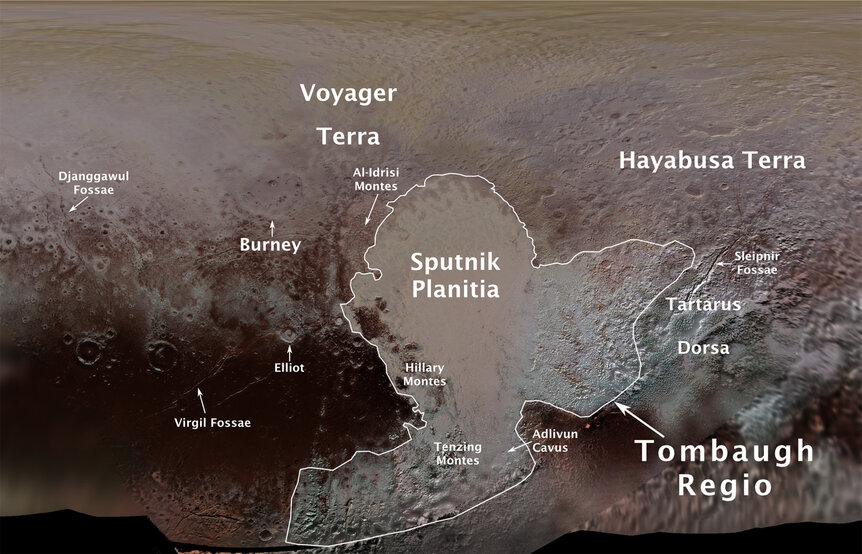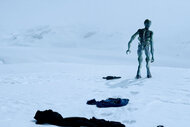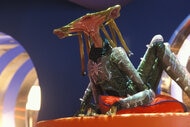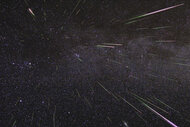Create a free profile to get unlimited access to exclusive videos, sweepstakes, and more!
Pluto's posse
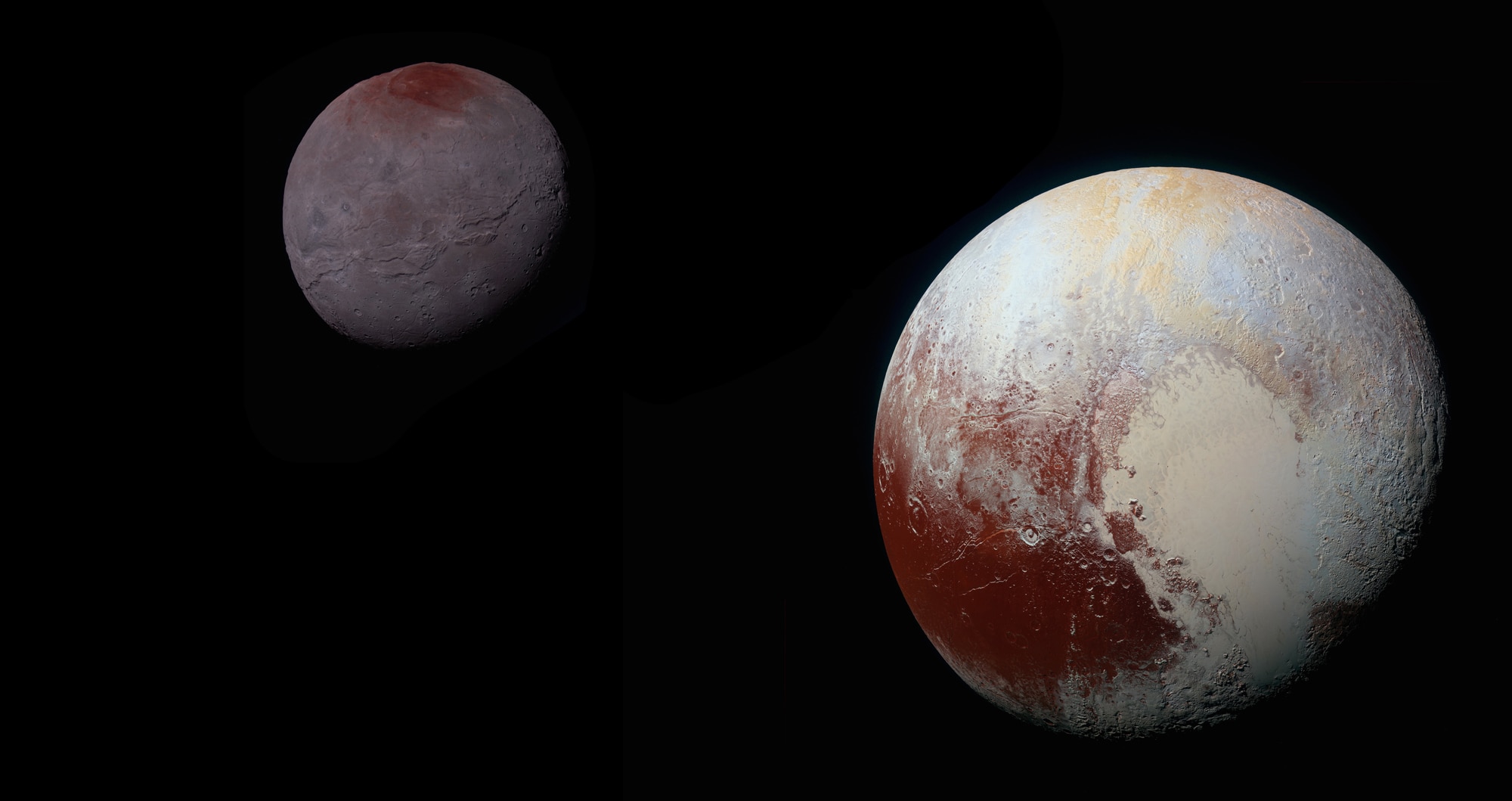
For 85 years, Pluto was pretty much a featureless dot.
Oh sure, some observations, particularly using Hubble, mapped out very broad regions, not much more than brighter and dimmer blotches*. But when the New Horizons space probe flew past Pluto on July 14, 2015, suddenly the tiny dot became a world.
New Horizons revealed plains and canyons, craters and mountains, and a passel of other weird features, too. Keeping them all straight as they were rapidly discovered was hard, so the planetary scientists on the New Horizons team gave them nicknames, with a theme of using the names of explorers, people related to the discovery and observation of Pluto, and different mythologies of the underworld (in keeping with the name Pluto itself). These were unofficial, and, in fact, it became a little bit of a joke during the flyby press conferences for scientists to mention that, since they had to say it every time.
But now, after more than two years, 14 of those names have become official. The New Horizons team proposed these names to the International Astronomical Union, the keepers of official cosmic names (among other duties), who mulled them over and have now approved them.
Some of the names include Tombaugh Regio, Pluto’s “heart,” a huge bright region nearly 1600 km across. It’s named after Clyde Tombaugh, who discovered Pluto in 1930. The left “lobe” of the heart is Sputnik Planitia, named after the Sputnik satellite, the first satellite ever launched into orbit by humans.
There’s Hillary Montes and Tenzing Montes, mountains named after the first two people known to have climbed to the very peak of Mount Everest and returned back down safely. There are other features named after underworld mythologies of the Inuit (Adlivun Cavus), Greek (Tartarus Dorsa), medieval Norwegians (Sleipnir Fossa), and aboriginal Australians (Djanggawul Fossae), which is very cool, and even two spacecraft that explored the solar system (Voyager Terra and Hayabusa Terra).
I think my favorite of them all is Burney Crater, named after Venetia Burney. After Tombaugh discovered this new world in 1930, Burney — 11 at the time — suggested calling it Pluto. Her father sent a note to astronomers, who liked it (especially since the first two letters of Pluto, PL, were the initials of Percival Lowell, the eccentric astronomer who funded the search for a new planet that led to Tombaugh’s discovery).
It’s nice that the IAU decided to make these 14 names official. I don’t envy their next task: There are hundreds of features on Pluto that still need designations. The New Horizons team plans on proposing many more (many of which were also named by the public, incidentally, which is pretty nifty). I hope they get approved, too.
But I do have another hope. Charon, Pluto’s oversized moon, was also mapped in detail, and the features there were given somewhat more, um, fanciful names. So we have the craters Organa and Skywalker. They sit not too far from the crater Vader, which is near Ripley Crater (which itself is split by the Nostromo Chasma). There’re also the craters Kirk, Spock, Uhura, and Sulu; chasms (still unofficially, mind you) named Serenity and Tardis; a highland named Oz; and an area called Gallifrey (I'll note, back on Pluto, there's also Cthulhu Regio). And, of course, there’s also the large, dark, reddish region around Charon’s north pole called Mordor Macula.
If they ever do, it may still take some time for the IAU to make these official, and that’s totally understandable. After all …
… one does not simply walk into naming Mordor Macula.
* Not to downplay those observations; they were cutting-edge for the time, and very difficult to obtain. They wound up mapping to real features, too, indicating they were accurate.
